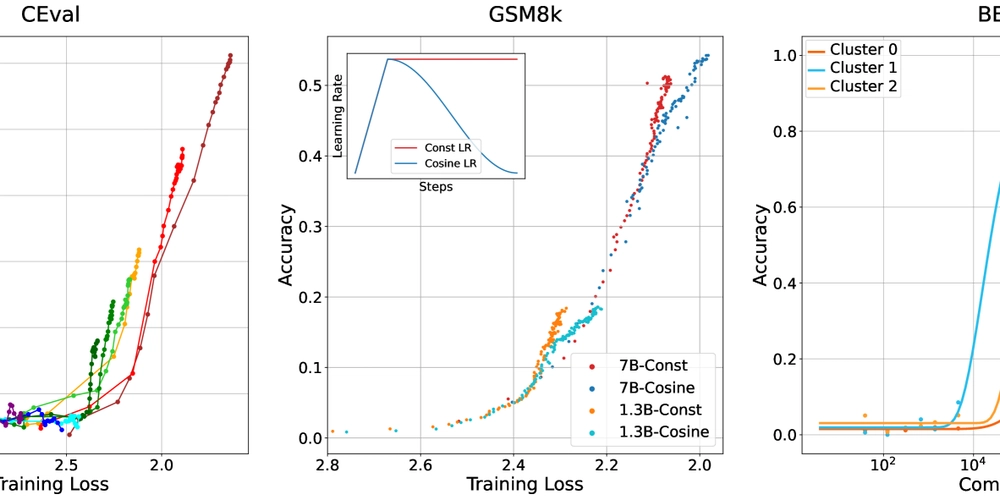15 Best REST API Clients and Testing Tools for 2025 - Your Essential Rest Api Client Toolkit
In the digitally interconnected world of 2025, Application Programming Interfaces (APIs), particularly Representational State Transfer (REST) APIs, are the invisible threads weaving together software applications, services, and data. They power everything from mobile apps fetching weather updates to complex enterprise systems exchanging critical business information. For developers, testers, and API architects, interacting with and validating these APIs is a daily necessity. This is where REST API clients and testing tools become indispensable. But what is an API client? Simply put, a client api tool allows users to send HTTP/S requests to a REST API endpoint and view the responses. This fundamental capability is crucial for debugging during development, exploring API functionalities, performing integration testing, and ensuring the overall health and reliability of API-driven applications. Choosing the right rest client application can significantly boost productivity, improve collaboration, and enhance the quality of software. The market is flooded with options, ranging from simple browser extensions to feature-rich desktop applications and comprehensive testing suites. Selecting the ideal restapi client depends on various factors: individual needs, team size, project complexity, platform preference, and budget. This guide explores 15 of the best REST API clients and testing tools anticipated to dominate the landscape in 2025, helping you navigate the choices and find the perfect rest tool for your workflow. Navigating the Choices: Key Considerations for Selecting Your Rest Api Client Before diving into the list, consider these factors when evaluating any Rest Api Client: Core Functionality: Can it easily craft and send various HTTP requests (GET, POST, PUT, DELETE, etc.)? Does it handle headers, authentication (Basic, OAuth, JWT, etc.), and request bodies effectively? Testing Capabilities: Does it support automated testing, scripting, assertions (json testing tool), and test suite organization? Can you check rest api responses against expected outcomes? Environment Management: Can you easily switch between different environments (development, staging, production) with distinct variables and configurations? Collaboration Features: Does the tool facilitate teamwork through shared workspaces, version control, or commenting? Ease of Use & Interface: Is the rest client intuitive? Does it offer features like syntax highlighting, auto-completion, and clear response visualization (rest viewer)? Platform & Accessibility: Is it a desktop app (Windows, macOS, Linux), a web-based online rest client, a browser extension (chrome rest api client), or a command-line interface (CLI) tool? Advanced Features: Does it offer API mocking, documentation generation, code snippet generation (e.g., for a java rest client), performance testing, or security scanning? Cost: Is it free, open-source, freemium, or a paid subscription model? Are there free rest api testing tools that meet your basic needs? Protocol Support: While focused on REST, does it support other protocols like GraphQL, SOAP, or WebSockets (considering rest alternatives or restful api alternative needs)? The Top 15: Best Rest Api Client and Testing Tools for 2025 Here are our picks for the leading Rest Api Client tools shaping API development and testing in 2025: 1. Apidog: The All-in-One Leading Rest Api Client apidog.com Apidog takes the top spot as a comprehensive, integrated collaboration platform for the entire API lifecycle. It seamlessly combines the functionalities of tools like Postman, Swagger, Mock, and JMeter into a single, cohesive rest client application. Its power lies in unifying API design, documentation, debugging, mocking, and automated testing. This eliminates data inconsistencies and communication overhead between different tools and roles (frontend, backend, QA). Key Features: Visual API design, intelligent mocking (using real data structures), powerful automated testing with assertions, collaborative workspaces, documentation generation, code generation (including rest api client in java), environment management. Why it Excels in 2025: Its integrated approach addresses the growing need for streamlined API workflows and better team collaboration, making it more than just a rest api tester; it's a complete API solution. It functions effectively as both a desktop and potentially a web-based api client. 2. Postman: The Ubiquitous Rest Api Client Postman remains a giant in the Rest Api Client space, widely adopted by millions of developers globally. Starting as a simple chrome rest api client, it evolved into a robust platform for the entire API lifecycle. The postman rest client is known for its user-friendly interface, extensive features, and strong community support. Key Features: Request building, testing automation (collections, runn
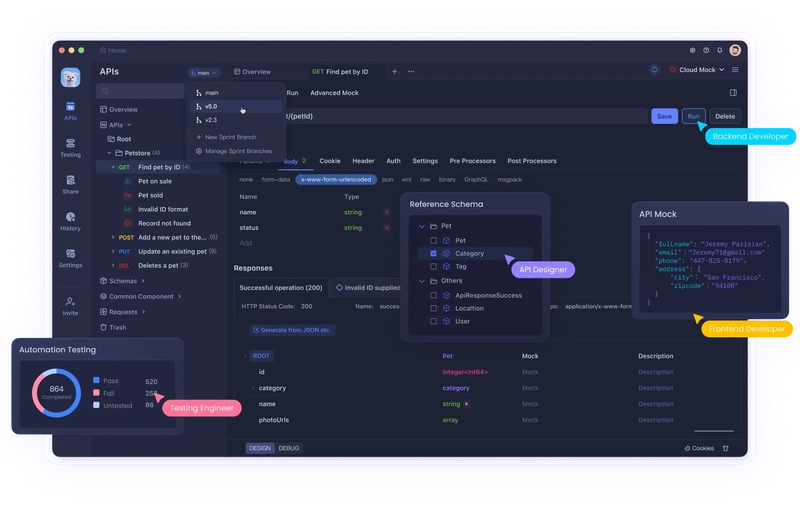
In the digitally interconnected world of 2025, Application Programming Interfaces (APIs), particularly Representational State Transfer (REST) APIs, are the invisible threads weaving together software applications, services, and data. They power everything from mobile apps fetching weather updates to complex enterprise systems exchanging critical business information. For developers, testers, and API architects, interacting with and validating these APIs is a daily necessity. This is where REST API clients and testing tools become indispensable.
But what is an API client? Simply put, a client api tool allows users to send HTTP/S requests to a REST API endpoint and view the responses. This fundamental capability is crucial for debugging during development, exploring API functionalities, performing integration testing, and ensuring the overall health and reliability of API-driven applications. Choosing the right rest client application can significantly boost productivity, improve collaboration, and enhance the quality of software.
The market is flooded with options, ranging from simple browser extensions to feature-rich desktop applications and comprehensive testing suites. Selecting the ideal restapi client depends on various factors: individual needs, team size, project complexity, platform preference, and budget. This guide explores 15 of the best REST API clients and testing tools anticipated to dominate the landscape in 2025, helping you navigate the choices and find the perfect rest tool for your workflow.
Navigating the Choices: Key Considerations for Selecting Your Rest Api Client
Before diving into the list, consider these factors when evaluating any Rest Api Client:
- Core Functionality: Can it easily craft and send various HTTP requests (GET, POST, PUT, DELETE, etc.)? Does it handle headers, authentication (Basic, OAuth, JWT, etc.), and request bodies effectively?
- Testing Capabilities: Does it support automated testing, scripting, assertions (
json testing tool), and test suite organization? Can youcheck rest apiresponses against expected outcomes? - Environment Management: Can you easily switch between different environments (development, staging, production) with distinct variables and configurations?
- Collaboration Features: Does the tool facilitate teamwork through shared workspaces, version control, or commenting?
- Ease of Use & Interface: Is the rest client intuitive? Does it offer features like syntax highlighting, auto-completion, and clear response visualization (
rest viewer)? - Platform & Accessibility: Is it a desktop app (Windows, macOS, Linux), a web-based
online rest client, a browser extension (chrome rest api client), or a command-line interface (CLI) tool? - Advanced Features: Does it offer API mocking, documentation generation, code snippet generation (e.g., for a
java rest client), performance testing, or security scanning? - Cost: Is it free, open-source, freemium, or a paid subscription model? Are there
free rest api testing toolsthat meet your basic needs? - Protocol Support: While focused on REST, does it support other protocols like GraphQL, SOAP, or WebSockets (considering
rest alternativesorrestful api alternativeneeds)?
The Top 15: Best Rest Api Client and Testing Tools for 2025
Here are our picks for the leading Rest Api Client tools shaping API development and testing in 2025:
1. Apidog: The All-in-One Leading Rest Api Client
Apidog takes the top spot as a comprehensive, integrated collaboration platform for the entire API lifecycle. It seamlessly combines the functionalities of tools like Postman, Swagger, Mock, and JMeter into a single, cohesive rest client application. Its power lies in unifying API design, documentation, debugging, mocking, and automated testing. This eliminates data inconsistencies and communication overhead between different tools and roles (frontend, backend, QA).
- Key Features: Visual API design, intelligent mocking (using real data structures), powerful automated testing with assertions, collaborative workspaces, documentation generation, code generation (including
rest api client in java), environment management. - Why it Excels in 2025: Its integrated approach addresses the growing need for streamlined API workflows and better team collaboration, making it more than just a rest api tester; it's a complete API solution. It functions effectively as both a desktop and potentially a web-based api client.
2. Postman: The Ubiquitous Rest Api Client
Postman remains a giant in the Rest Api Client space, widely adopted by millions of developers globally. Starting as a simple chrome rest api client, it evolved into a robust platform for the entire API lifecycle. The postman rest client is known for its user-friendly interface, extensive features, and strong community support.
- Key Features: Request building, testing automation (collections, runners, Newman CLI), scripting, mocking, documentation, monitoring, workspaces for collaboration, extensive integrations.
- Why it Excels in 2025: Its maturity, vast feature set (
postman api clientcapabilities), and large user base make thepostman rest api clienta default choice for many. While some seek apostman lightweight api client, its comprehensive nature remains a major draw. It effectively serves as a primaryrest api tool.
3. Insomnia: The Sleek Open-Source Focused Rest Api Client
Insomnia, now under Kong, offers a clean, modern interface and a powerful feature set, appealing to developers who appreciate design and efficiency. It started with a strong open-source ethos and provides excellent support for REST, GraphQL, gRPC, and more.
- Key Features: Beautiful UI, environment variables, template tags, plugin ecosystem, code generation, request/response history, Git sync for collaboration.
- Why it Excels in 2025: Its multi-protocol support and focus on developer experience make it a strong contender, especially for those working beyond just REST APIs. It's a well-regarded
restful client.
4. Swagger UI: The Documentation-Centric Rest Api Client
Swagger UI isn't a standalone testing tool in the same vein as Postman or Apidog, but it's a crucial part of the OpenAPI Specification ecosystem. It automatically generates interactive API documentation from an OpenAPI definition, allowing users to explore and test API endpoints directly within their browser.
- Key Features: Interactive documentation, automatically generated from OpenAPI specs, allows making live
api call toolsdirectly from docs, customizable UI. - Why it Excels in 2025: As API documentation becomes increasingly critical, Swagger UI provides an essential, standardized way to interact with and perform basic checks on a
rest endpoint for testing. It acts as a lightweightrest viewerand interaction point.
5. Hoppscotch: The Open-Source Web-Based Rest Api Client
Formerly known as Postwoman, Hoppscotch has gained significant traction as a free, open-source, and beautifully designed Rest Api Client. It runs directly in the browser (online rest client, rest client online) and can be installed as a Progressive Web App (PWA).
- Key Features: Web-based, PWA support, REST/GraphQL/WebSocket/MQTT support, real-time connections, themes, scripting, history, collections, proxy mode.
- Why it Excels in 2025: Its accessibility (no installation required), speed, and open-source nature make it a fantastic
lightweight api testing tooland a popularrestful api alternativeto heavier desktop clients.
6. Bruno API Client: The Offline, Git-Friendly Rest Api Client
Bruno is a newer entrant gaining popularity due to its unique philosophy: storing API collection data directly on the filesystem using a plain text markup language (BruML). This makes it inherently Git-friendly, appealing to developers who prefer version control for everything.
- Key Features: Offline-first, stores collections as files, Git-friendly, BruML markup language, scripting, assertions, CLI runner (supports
tools to test rest apiin CI/CD). - Why it Excels in 2025: The
bruno api clientaddresses the collaboration and versioning pain points experienced with database-centric clients, positioning thebruno rest clientas a compellingpostman lightweight api clientalternative for developers favoring local file management.
7. Advanced REST Client (ARC): The Veteran Rest Api Client
Advanced REST Client (ARC) has a long history, starting as a popular Chrome app (rest api client chrome). It has since evolved into a standalone desktop application while retaining its focus on ease of use for making HTTP requests.
- Key Features: Request building, history, variable system, WebSocket support, themes, project organization.
- Why it Excels in 2025: The
advanced rest clientremains a solid, straightforward choice for developers needing a reliablerest client for chrome browserhistory users or a simple desktoprest client application.
8. Katalon Studio: The Integrated Automation Rest Api Client
Katalon Studio is a comprehensive test automation platform that goes beyond APIs, covering web, mobile, and desktop testing. However, its API testing capabilities are robust, offering a user-friendly interface for creating and managing API tests.
- Key Features: Codeless test creation, scripting mode (Groovy), BDD support, data-driven testing, CI/CD integration, built-in reporting.
- Why it Excels in 2025: For teams needing an integrated solution for various types of testing, Katalon provides powerful
rest api testing toolfeatures within a broader automation framework. It's a seriousrest testing tool.
9. ReadyAPI (SmartBear): The Enterprise-Grade Rest Api Client
ReadyAPI, from SmartBear (the makers of SoapUI), is an enterprise-focused API quality platform. It provides tools for comprehensive functional testing, load testing, security testing, and virtualization/mocking of REST and SOAP services.
- Key Features: Drag-and-drop test creation, data-driven testing, security scans, performance testing, service virtualization, extensive reporting.
- Why it Excels in 2025: For large organizations with complex requirements and compliance needs, ReadyAPI offers an industrial-strength suite of
rest api toolsthat go far beyond basic request/response handling.
10. Paw (RapidAPI): The Native macOS Rest Api Client
Paw (now part of RapidAPI) is a beautifully designed, native macOS Rest Api Client. It focuses heavily on user experience and providing powerful features within an intuitive interface specifically tailored for Mac users.
- Key Features: Native macOS experience, dynamic values, environments, extensions, code generation, cookie management, visually appealing interface.
- Why it Excels in 2025: For developers deep in the Apple ecosystem, Paw offers a premium, highly polished
rest clientexperience that feels right at home on macOS. It's a sophisticatedapi client.
11. SoapUI (SmartBear): The Veteran Multi-Protocol Rest Api Client
While its name suggests a SOAP focus, SoapUI has long provided strong support for REST APIs as well. It's a mature, open-source (with a pro version) functional testing tool used widely in enterprise environments.
- Key Features: Functional testing, security testing, load testing (Pro), mocking, scripting (Groovy), data-driven testing.
- Why it Excels in 2025: Its longevity and robust feature set, especially for those needing both SOAP and REST support, keep it relevant. It remains one of the key
tools to test rest api.
12. RESTLet Client (Talia): The Browser-Based Rest Api Client
RESTLet Client, originally developed by the company Restlet and later available as Talia, was another popular browser extension (restlet client) for API testing. While its development status might fluctuate, its historical significance and user base warrant mention.
- Key Features: Request creation, history, authentication handling, environment variables (often browser-based).
- Why it Excels in 2025: Users familiar with its interface or looking for simple, browser-integrated
rest clientsmight still find it useful, depending on its current availability and maintenance.
13. HTTPie: The CLI-Focused Rest Api Client
HTTPie aims to be a human-friendly command-line HTTP client. It provides a simple http command that makes interacting with web services from the terminal intuitive and pleasant, often considered easier than curl for interactive use.
- Key Features: Expressive syntax, JSON support built-in, syntax highlighting, plugins, persistent sessions, downloadable content support.
- Why it Excels in 2025: For developers who live in the terminal, HTTPie offers a streamlined and visually appealing way to act as a
rest api callerandlightweight api testing tool. It’s a greatrest-clientfor scripting and quick checks.
14. Mockoon: The Mocking Specialist Rest Api Client
While not a traditional request sender, Mockoon excels at creating mock API servers quickly and easily. Setting up a local rest endpoint for testing becomes trivial, allowing frontend developers to work independently of the backend or enabling specific test scenarios.
- Key Features: Fast mock server setup, no registration needed, runs locally, intuitive UI, dynamic templating in responses, proxy mode, request logging.
- Why it Excels in 2025: The growing need for decoupled development and robust testing makes dedicated mocking tools like Mockoon essential. It provides a
free rest api for testingsetup locally.
15. curl: The Fundamental Rest Api Client
No list of Rest Api Client tools would be complete without curl. This command-line workhorse is ubiquitous, available on virtually every operating system. While not as user-friendly as GUI clients for exploration, it's incredibly powerful for scripting, automation, and quick checks.
- Key Features: Extremely versatile, supports numerous protocols (HTTP, HTTPS, FTP, etc.), extensive options for headers, data, authentication, widely scriptable.
- Why it Excels in 2025:
curlremains the bedrockapi call tools. Understanding it is fundamental for many developers and essential for automating API interactions in CI/CD pipelines or scripts. It allows you tocheck rest apiresponses directly from the command line. It is the originalrestclient.
Conclusion: Choosing Your Perfect Rest Api Client for 2025
The world of REST API clients and testing tools is rich and varied in 2025. From all-in-one platforms like Apidog (#1) and the ever-popular postman rest api client to sleek alternatives like Insomnia, web-based options like Hoppscotch, CLI tools like HTTPie, and specialized solutions like Mockoon, there's a restful api software solution for every need and preference.
Whether you need a simple rest api app for occasional debugging, a free rest api testing tools option, a robust rest api testing tool for complex automation suites, or an integrated platform to manage the entire API lifecycle, the tools listed here represent the best the market has to offer. Evaluate your specific requirements, consider the factors outlined earlier, and choose the Rest Api Client (or combination of api clients) that will best empower your development and testing workflows in the dynamic API landscape of 2025 and beyond. The right rest api tool is waiting to streamline your work with restful api software.










































































































































































![[The AI Show Episode 144]: ChatGPT’s New Memory, Shopify CEO’s Leaked “AI First” Memo, Google Cloud Next Releases, o3 and o4-mini Coming Soon & Llama 4’s Rocky Launch](https://www.marketingaiinstitute.com/hubfs/ep%20144%20cover.png)















































































































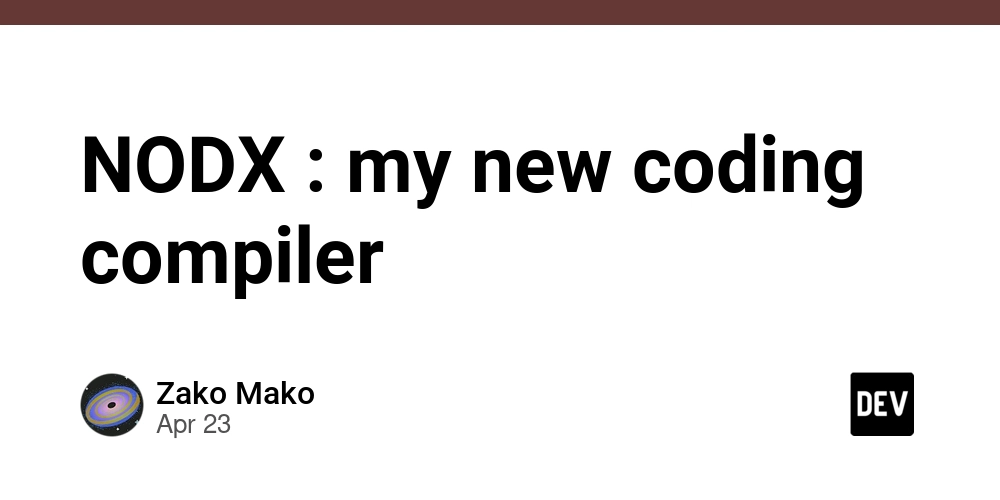


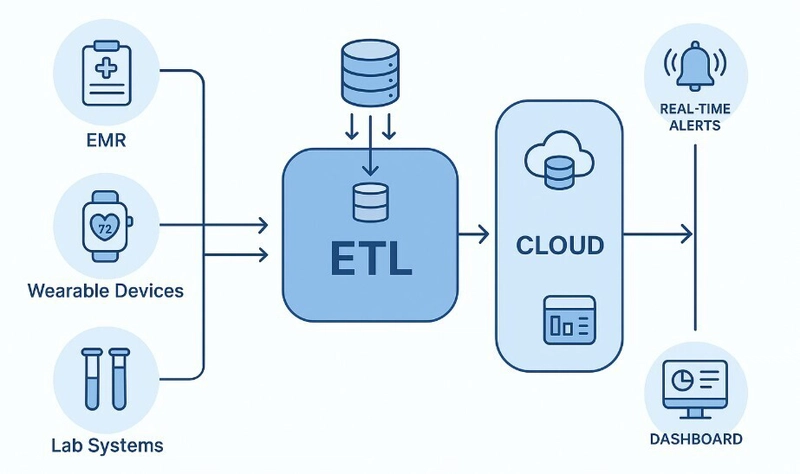





































![Is This Programming Paradigm New? [closed]](https://miro.medium.com/v2/resize:fit:1200/format:webp/1*nKR2930riHA4VC7dLwIuxA.gif)



























































































-Classic-Nintendo-GameCube-games-are-coming-to-Nintendo-Switch-2!-00-00-13.png?width=1920&height=1920&fit=bounds&quality=70&format=jpg&auto=webp#)








































































































































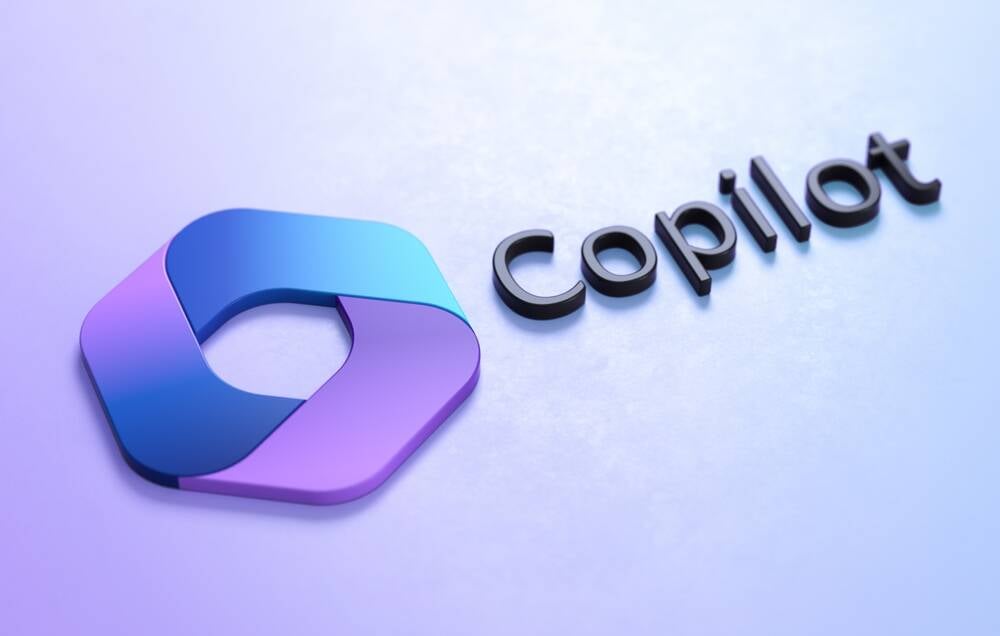



![M4 MacBook Air Drops to New All-Time Low of $912 [Deal]](https://www.iclarified.com/images/news/97108/97108/97108-640.jpg)
![New iPhone 17 Dummy Models Surface in Black and White [Images]](https://www.iclarified.com/images/news/97106/97106/97106-640.jpg)





































































































































